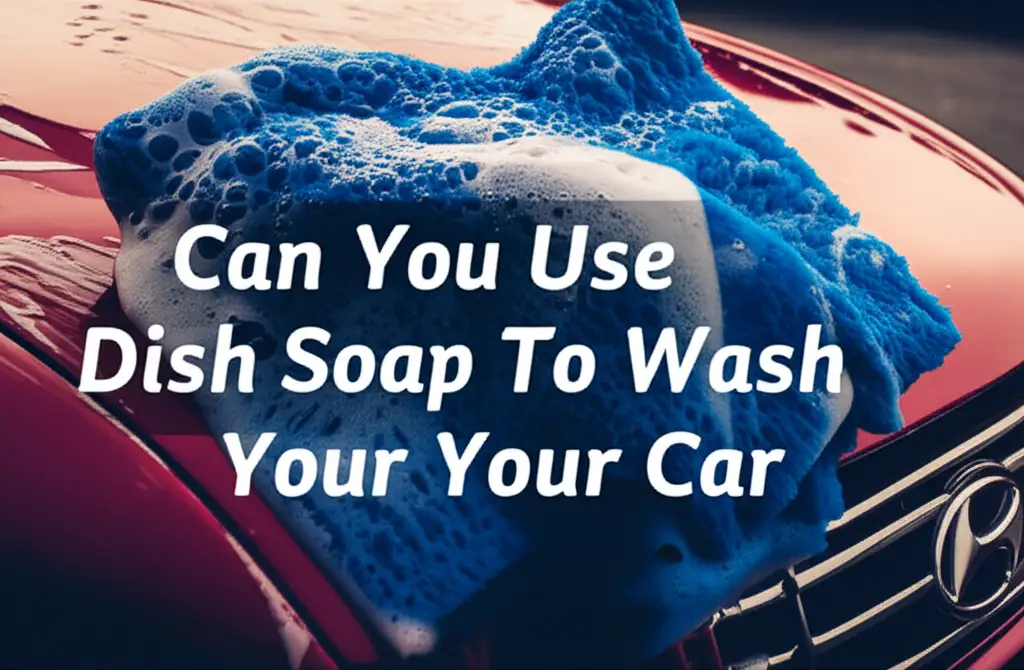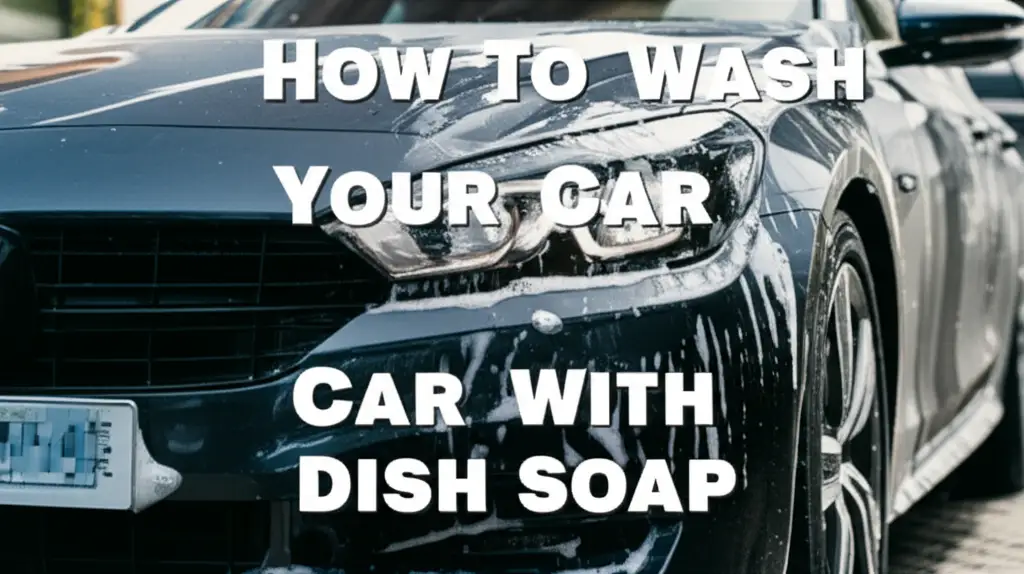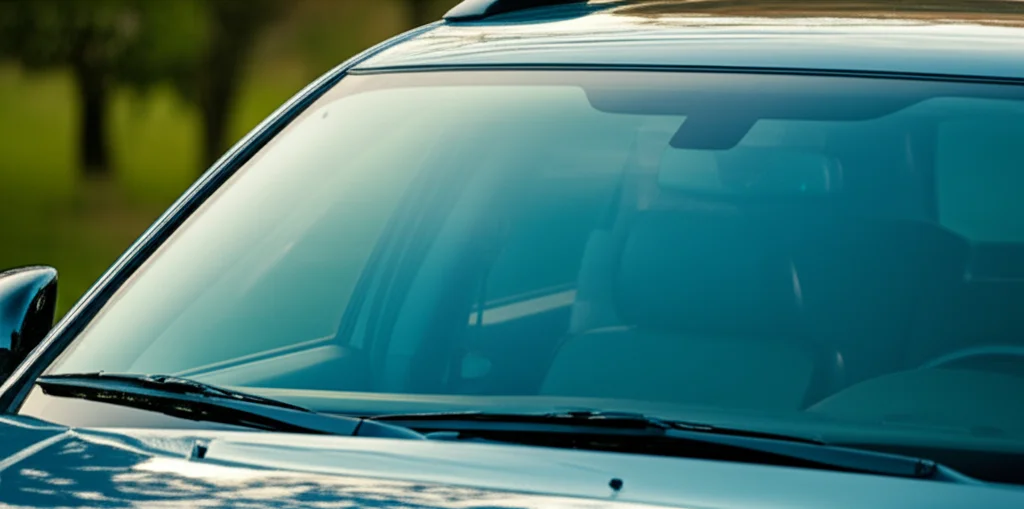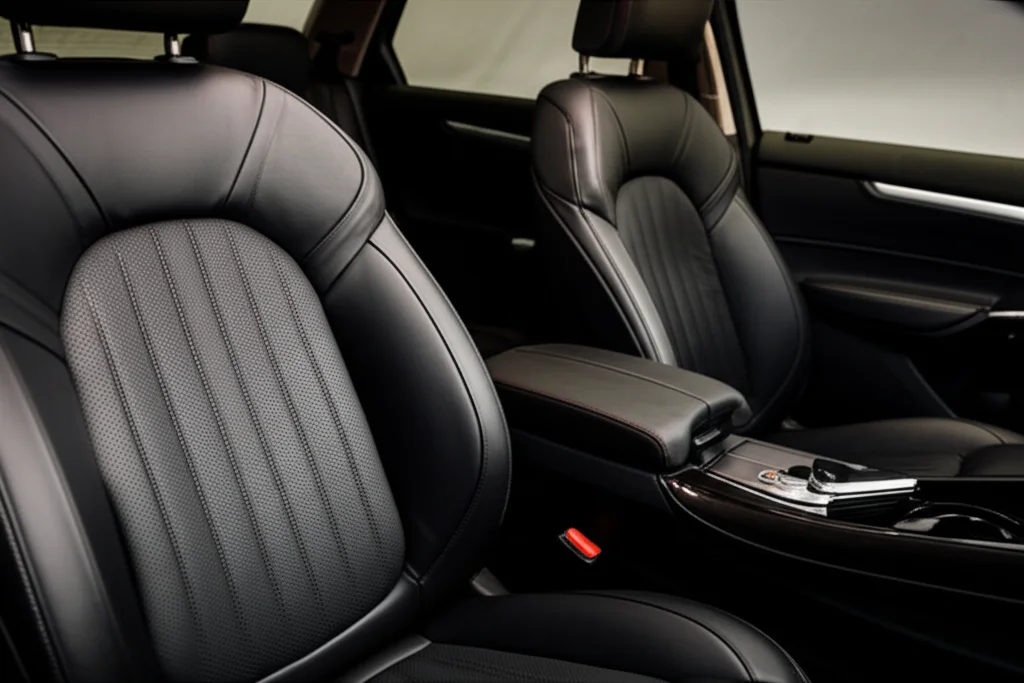· Todd Martin · Car Care · 17 min read
Can You Use Dish Soap To Wash Your Car

Can You Use Dish Soap To Wash Your Car
A dirty car is a common sight. Mud, dust, and grime build up over time. Many people wonder about quick cleaning solutions. A bottle of dish soap is often within reach. It cleans greasy dishes so well. This makes people think it can also clean their greasy car. The question is, “Can you use dish soap to wash your car?” This article explores the answer. We will look at how dish soap works and what it does to your car’s finish. We also discuss why specialized car wash soaps are a better choice. You will learn the correct way to keep your car looking great.
Takeaway:
- Do not use dish soap to wash your car.
- Dish soap strips away protective layers like wax and sealants.
- It can dull your car’s paint over time.
- Always use a dedicated car wash soap.
- Proper washing methods protect your vehicle’s finish.
No, you should not use dish soap to wash your car. Dish soap is designed to strip grease and food particles from dishes. It is too harsh for your car’s delicate paint, clear coat, and protective wax layers. Using it can cause dullness, streaks, and long-term damage to your vehicle’s exterior.
The Problem with Dish Soap: Stripping Your Car’s Protection
Many people consider using dish soap for car washing. It seems like a cost-effective solution. Dish soap is excellent at cutting through grease. This strength is precisely why it is harmful to your car. Your car’s paint has a clear coat. This clear coat protects the color underneath. It also gives your car its shine.
Think of it like this: your car has a skin. This skin needs gentle cleaning, not harsh degreasing. Dish soap is a powerful degreaser. It is designed to remove tough oils and fats from kitchenware. When you use it on your car, it does more than just clean dirt. It actively removes the protective wax or sealant layers. These layers are vital for protecting your paint.
Over time, this stripping action leads to problems. Your car’s paint becomes exposed. It loses its shine. It also becomes more vulnerable to environmental damage. Things like UV rays, bird droppings, and tree sap can harm the paint directly. They no longer have a protective barrier.
Using dish soap is a shortcut that costs more in the long run. You save a few dollars on car soap today. But you might spend much more on paint correction later. Protecting your car’s finish is important. It helps maintain its appearance and resale value. Always use products made for car exteriors. These products clean without harming the protective layers. They keep your car looking new for years.
Understanding Your Car’s Paint and Clear Coat
Your car’s paint job is more complex than you might think. It is not just one layer of color. A modern car’s finish has several distinct layers. Each layer plays a specific role. Understanding these layers helps you see why specialized care is important.
The first layer is the primer. This goes directly onto the metal body. Primer helps the paint stick better. It also provides a uniform surface. Next comes the base coat. This is the actual color of your car. It gives your vehicle its unique look. The base coat alone is very fragile. It needs protection from the elements.
The most important layer for shine and protection is the clear coat. This is a transparent layer applied over the base coat. It acts like a shield. The clear coat protects the color from UV rays, scratches, and chemical stains. It is also what gives your car its deep, glossy shine. When you wax your car, you are applying a protective layer on top of this clear coat.
The clear coat is durable, but it is not invincible. Harsh chemicals can break it down. Dish soap contains strong detergents. These detergents are too aggressive for the clear coat. They can strip away waxes and sealants. They can also dry out the clear coat itself. This leads to a dull appearance over time. Fine scratches become more visible. The paint loses its vibrant look.
Proper care preserves these layers. Using the right soap maintains the clear coat’s integrity. It ensures your car’s finish remains glossy and protected. This extends the life of your paint job. It also helps your car keep its value. Protect your car’s exterior, just like you would protect your skin from harsh elements.
The Science Behind Dish Soap: Why It’s Too Harsh for Your Car
Dish soap is a powerful cleaning agent. It excels at its intended job. This is because of its chemical makeup. Most dish soaps are highly alkaline. This means they have a high pH level. This high pH helps them break down grease and oil. They are also full of strong surfactants. Surfactants are chemicals that reduce the surface tension of water. This allows water to spread out more and lift dirt away.
When you use dish soap on dishes, this is ideal. It quickly emulsifies fats and oils. This makes it easy to rinse them away. However, your car’s paint and protective layers are very different from kitchenware. Car waxes and sealants are essentially oil-based polymers. They form a protective barrier on your car. Their job is to repel water and protect the paint.
The high alkalinity and strong surfactants in dish soap attack these protective layers. They strip them away efficiently. Imagine using a powerful solvent to clean a delicate surface. It might clean it, but it will also damage it. Dish soap acts similarly on your car’s wax or sealant. It removes the protective layer you worked to put on.
Furthermore, dish soaps often contain salts and other additives. These can leave behind residues. These residues can cause streaks on your car’s finish. They can also attract more dust and dirt. This means your car might look clean for a short time, but it quickly gets dirty again.
Car wash soaps, in contrast, are pH-neutral. They contain lubricants and gentler surfactants. These ingredients clean the dirt without harming the wax or clear coat. They allow dirt to slide off the paint. This reduces the risk of scratching. They are designed to preserve the finish. This is why a specialized car wash soap is always the better choice. It respects the chemistry of your car’s exterior.
What Happens When You Use Dish Soap to Wash Your Car
Using dish soap on your car might seem harmless at first. However, its effects become clear over time. The immediate result might be a car that looks clean. But this cleanliness comes at a cost. The long-term damage is what you need to worry about. Let’s break down what happens to your car.
First, dish soap strips off any wax or sealant. These are critical protective layers. Wax provides a sacrificial layer. It takes the brunt of environmental attacks. When you wash it away, your car’s clear coat becomes exposed. This leaves the paint vulnerable to UV rays, acid rain, and road grime. The car loses its protective barrier.
Second, your car’s paint will become dull. The clear coat needs to be smooth and free of residue to reflect light well. Dish soap can dry out the clear coat. It might also leave behind a hazy film. This makes the once glossy paint look flat and lifeless. The vibrant color fades. The depth of the shine disappears.
Third, you might see water spots and streaks. Dish soap is not designed to rinse cleanly from large, painted surfaces. It leaves behind residues that dry on the surface. These residues can be hard to remove. They leave unsightly marks. This means you end up with a car that looks worse than when you started.
Fourth, rubber and plastic trim can suffer. Dish soap’s degreasing action can dry out rubber seals and plastic moldings. These parts can become brittle or crack over time. This leads to premature aging of these components. It can also cause them to lose their color. This affects the overall look of your car.
In summary, using dish soap is a quick fix with negative consequences. It damages protective layers. It dulls paint. It leaves streaks. It dries out trim. These issues mean more work and money spent later. Investing in proper car wash products prevents these problems. It keeps your car looking good for longer.
Why Car Wash Soaps are Different and Better
Dedicated car wash soaps are formulated specifically for vehicles. They offer many advantages over household cleaners like dish soap. These soaps are designed to clean effectively while protecting your car’s delicate finish. Understanding their unique properties shows why they are essential.
The primary difference lies in their pH balance. Most car soaps are pH-neutral. This means they are neither highly acidic nor highly alkaline. This balance is crucial. A pH-neutral formula ensures the soap cleans dirt and grime without harming your car’s wax, sealant, or clear coat. It lifts away contaminants gently. This preserves the integrity of your paint protection.
Car wash soaps also contain special lubricants. These lubricants create a slippery barrier between your wash mitt and the car’s surface. When you wipe, dirt particles are encapsulated. They slide off the paint instead of scratching it. This greatly reduces the risk of swirl marks and micro-scratches. These tiny scratches become visible in sunlight. They make your car look dull.
Many car wash soaps also include wax boosters or gloss enhancers. These ingredients help maintain or even improve the shine of your car’s finish. Some soaps leave a thin, protective layer that boosts water beading. This makes drying easier and helps repel dirt. This is an added benefit you will never get from dish soap.
Furthermore, car soaps are designed to rinse cleanly. They do not leave behind streaks or residues. This makes the washing process easier and faster. You achieve a spotless, streak-free shine. This clean rinse ensures your car looks its best after drying.
Using a proper car wash soap is an investment in your car’s appearance and longevity. It preserves the paint. It protects the clear coat. It prevents damage. It makes the washing process safer and more effective. For a clean, shiny, and protected car, always choose a specialized car wash product. This choice helps you how to keep your car clean for longer.
Best Practices for Washing Your Car Safely
Washing your car correctly does more than just make it look good. It protects the paint. It also extends the life of your car’s finish. Using the right products is only part of the equation. Following proper techniques is just as important. I want to share the steps I use to get a great result.
First, gather your tools. You will need two buckets, a grit guard for each bucket, a soft wash mitt, a dedicated car wash soap, and soft microfiber drying towels. One bucket is for soapy water. The other is for rinsing your wash mitt. This two-bucket method prevents transferring dirt back to your car.
Start by rinsing your car thoroughly with water. Use a hose with a strong but gentle stream. This removes loose dirt and debris. Always work from the top down. This ensures gravity helps carry dirt away. A good rinse reduces the chance of scratching the paint during washing. For a more intensive clean, consider how to deep clean your car periodically.
Next, wash one section at a time. Dip your wash mitt into the soapy water. Gently wipe a small area of the car. Do not apply too much pressure. Let the soap do the work. After washing a section, rinse your mitt in the rinse bucket. This removes trapped dirt from the mitt. Then, reload it with fresh soapy water. This method keeps your wash water cleaner.
Rinse each section immediately after washing it. Do not let the soap dry on the car. This prevents water spots and streaks. Once the entire car is washed and rinsed, it is time to dry. Use soft, clean microfiber drying towels. Blot the water, do not rub. Microfiber absorbs water quickly without leaving lint. Always dry your car in the shade. Drying in direct sunlight can cause water spots.
Remember to also consider the often-overlooked interior. While exterior washing is important, a truly clean car involves caring for the inside too. Knowing how to clean the inside of your car completes your detailing efforts. Proper washing methods protect your vehicle’s paint and maintain its shine. These steps help prevent damage and keep your car looking its best.
Beyond Washing: Protecting Your Car’s Finish
Washing your car properly is a crucial step. However, protection goes beyond just washing. To truly maintain your car’s finish, you need to add protective layers. These layers act as a barrier against environmental damage. They also enhance your car’s shine.
The most common form of protection is waxing. Car wax creates a slick, sacrificial layer over your clear coat. This layer repels water, dust, and grime. It also provides UV protection, preventing the clear coat from oxidizing. Wax needs to be applied every few months, depending on the type and your driving conditions. It gives your paint a deep, wet look.
For longer-lasting protection, consider paint sealants. Sealants are synthetic polymers. They bond more strongly to your car’s clear coat than natural waxes. They offer superior durability and protection. Sealants can last anywhere from six months to a year or more. They provide excellent resistance to chemicals and environmental fallout. Applying a sealant provides a harder shield for your paint.
The ultimate protection comes from ceramic coatings. These are advanced liquid polymers. They form a permanent or semi-permanent bond with the car’s factory paint. Once cured, a ceramic coating creates an incredibly hard and durable layer. It provides extreme gloss, water repellency, and resistance to scratches and chemical stains. Ceramic coatings can last for several years. They require professional application for best results.
Regardless of the protection you choose, proper application is key. Always apply these products to a clean, dry surface. Follow the manufacturer’s instructions carefully. These protective layers make your car easier to clean in the future. They also keep your car looking new for a long time. Maintaining these layers is essential for long-term paint health. This comprehensive approach helps you how to keep car clean and protected.
Common Misconceptions About Car Cleaning
Many myths exist about how to best clean a car. Some of these come from old habits. Others come from a lack of understanding about modern car finishes. Let’s clear up some common misconceptions. Knowing the truth helps you care for your car better.
One big myth is that any soap will do. We have already covered why dish soap is a bad idea. But some people think laundry detergent or household cleaners are fine. These products are also too harsh for car paint. They strip waxes and can leave streaks. Always use products specifically made for car exteriors. Their pH balance is correct.
Another misconception is that more soap means a cleaner car. Using too much car wash soap can actually be counterproductive. Excess soap can be hard to rinse off. This leads to soap residue and water spots. It also wastes product. Follow the dilution instructions on your car soap bottle. A little often goes a long way.
Some believe that automatic car washes are just as good as hand washing. While convenient, many automatic car washes use harsh brushes. These brushes can cause swirl marks and scratches. They also might not clean as thoroughly as a careful hand wash. Touchless car washes are safer for the paint. But they might not remove all stubborn grime. Hand washing with the right technique is generally the best for paint preservation.
Another myth is that you do not need to dry your car. Letting your car air dry is a common mistake. Water contains minerals. When water evaporates, these minerals are left behind. This creates unsightly water spots. Especially if you have hard water, drying your car immediately after rinsing is crucial. Use soft microfiber towels to absorb all water.
Lastly, some think waxing is only for shine. While wax does boost shine, its main role is protection. It shields your paint from UV rays, dirt, and contaminants. Neglecting to wax your car leaves the clear coat exposed. This speeds up paint degradation. Regular waxing is a protective measure, not just a cosmetic one. Dispelling these myths helps ensure your car gets the care it deserves.
Frequently Asked Questions
Can dish soap remove car wax?
Yes, dish soap effectively removes car wax and sealants. It is designed as a degreaser. Its strong chemical properties strip away the protective layers. This leaves your car’s clear coat exposed and vulnerable. Dedicated car soaps are formulated to clean without harming these layers.
Will dish soap dull car paint?
Yes, dish soap can dull car paint over time. Its harsh detergents can dry out the clear coat. It can also leave a residue. This residue makes the paint look hazy and less vibrant. Consistent use will diminish the shine and depth of your car’s finish.
Is it okay to use dish soap on car windows?
Using dish soap on car windows is also not ideal. It can leave streaks and a hazy film. This can reduce visibility. For windows, use a dedicated automotive glass cleaner. These cleaners are formulated to remove grime and leave a streak-free finish.
How often should I wash my car?
The frequency depends on how often you drive and your environment. Generally, washing your car every two weeks is a good practice. If you drive in dusty areas, through snow with salt, or under trees, you might need to wash it more often. Regular washing prevents dirt from bonding with the paint.
What is the best soap to wash my car with?
The best soap to wash your car with is a pH-neutral, dedicated car wash soap. Look for products that are biodegradable and designed to be gentle on paint. Many good options include lubricants and gloss enhancers. These soaps clean effectively without stripping wax or damaging the clear coat.
Can I use dish soap to clean my car’s interior?
No, avoid using dish soap for your car’s interior. It can dry out and damage surfaces like leather, vinyl, and plastic. For interior cleaning, use specialized automotive interior cleaners. These products are formulated for specific surfaces and will not cause damage. If you need to clean oil from car carpet, a different approach is necessary. For example, knowing what soap clean oil in carpet can be helpful, but generally, not dish soap.
Conclusion
So, can you use dish soap to wash your car? The answer is a clear no. While it might seem like a convenient and effective cleaner, dish soap is far too harsh for your car’s delicate finish. It strips away essential protective layers like wax and sealants. This leaves your paint exposed to damage and causes it to dull over time. The small savings you might gain from using dish soap are quickly outweighed by potential paint damage and the cost of repairs.
Protecting your car’s paint is vital for its appearance and value. Always invest in a dedicated car wash soap. These soaps are pH-neutral, contain lubricants, and are formulated to clean gently. They remove dirt without harming your car’s clear coat or protective layers. Combine the right soap with proper washing techniques, like the two-bucket method and gentle drying. This ensures a spotless, swirl-free shine every time.
Beyond washing, apply wax, sealant, or a ceramic coating regularly. These additional layers provide a crucial barrier against environmental damage. They keep your car looking new for years to come. Your car is a significant investment. Giving it the right care preserves its beauty and longevity. Make the smart choice: use products designed for your vehicle.
Category determination: "Car Care" is a fitting category as the article directly deals with vehicle maintenance and cleaning practices.
Tags:
- Car Washing (Primary topic)
- Dish Soap (Primary keyword)
- Vehicle Maintenance (Broader category)
- Auto Detailing (Related field)
- Car Paint Protection (Key benefit of avoiding dish soap)
Excerpt: "Learn if you can use dish soap to wash your car and why dedicated car soaps are better for protecting your vehicle's finish." (130 characters, includes primary keyword "dish soap to wash your car" implicitly and explicitly via "dish soap" and "wash your car").




